Artworks – finally open to select visits from the public – highlight the shifting, even vivacious, nature of the exclusion zone’s landscape
Japanese artist Meiro Koizumi’s site-specific sound installation Home (2015–19) was one of 12 artist projects that constitute Don’t Follow the Wind (2015–), an exhibition initiated by artist collective Chim↑Pom from Smappa!Group and located in the Fukushima exclusion zone surrounding TEPCO’s compromised Daiichi Nuclear Power Plant. That compromise forced the evacuation of over 160,000 residents within a 20km radius of the plant in 2011.
The exhibition’s location has meant that works have been on show, but inaccessible to the public, since its opening on 11 March 2015, the anniversary of the Great Tohoku Earthquake. Displaced residents have been given opportunities to make day visits to their homes, and some of them volunteered these visits, as well as their homes and other sites, to the curatorial team and artists, allowing the installation and maintenance of works in the exhibition.

Last month, Futaba City, Fukushima (230km away from Tokyo), where Home was originally installed in the badly damaged house of a displaced resident, lifted its evacuation order. Accessible on 16 days between the end of October and early December 2022, the re-edit of Home will be the first Don’t Follow the Wind project opened to the public. Consistent with Koizumi’s oeuvre, the work teases and troubles the boundaries between private experience and wider social phenomena – in this case, the effects of the ongoing nuclear disaster and resulting displacement on private, domestic life and its exposure to the public as artwork.
In Home, two pairs of wireless headphones were placed at the edge of a destroyed living room whose glass sliding doors opened to a yard. Standing in the yard and viewing the living room scattered with debris and the leftovers of a life quickly abandoned in search of safety, the visitor could listen to an audio recording of ‘Mr Y’, who made his home available to Koizumi as a site for this sound installation. Mr Y imagines and acts out a conversation he and his wife might have had over their first dinner after returning to Futaba. His delivery, slow, relaxed and in a Northeastern drawl, is disarming and unaffected. The conversation goes something like this:
“I’m home. I’m home. I’m home.”
“You’re back. Cold day today. Want me to turn the stove on?”
“No, that’s alright. What’s for dinner?”
As they talk (or as he imagines they’d talk), he presciently surmises that any return to their home in this town devastated by nuclear disaster will be complex.
“We’re finally home and this is our first dinner back. Food sure tastes different in Futaba.”
“Honey, what will you do now? Will you stay here forever?”
“I don’t know yet. I want to spend more time here though.”
“But it’s inconvenient here. I’m going to leave tomorrow.”
“Alright. I’ll come with you.”
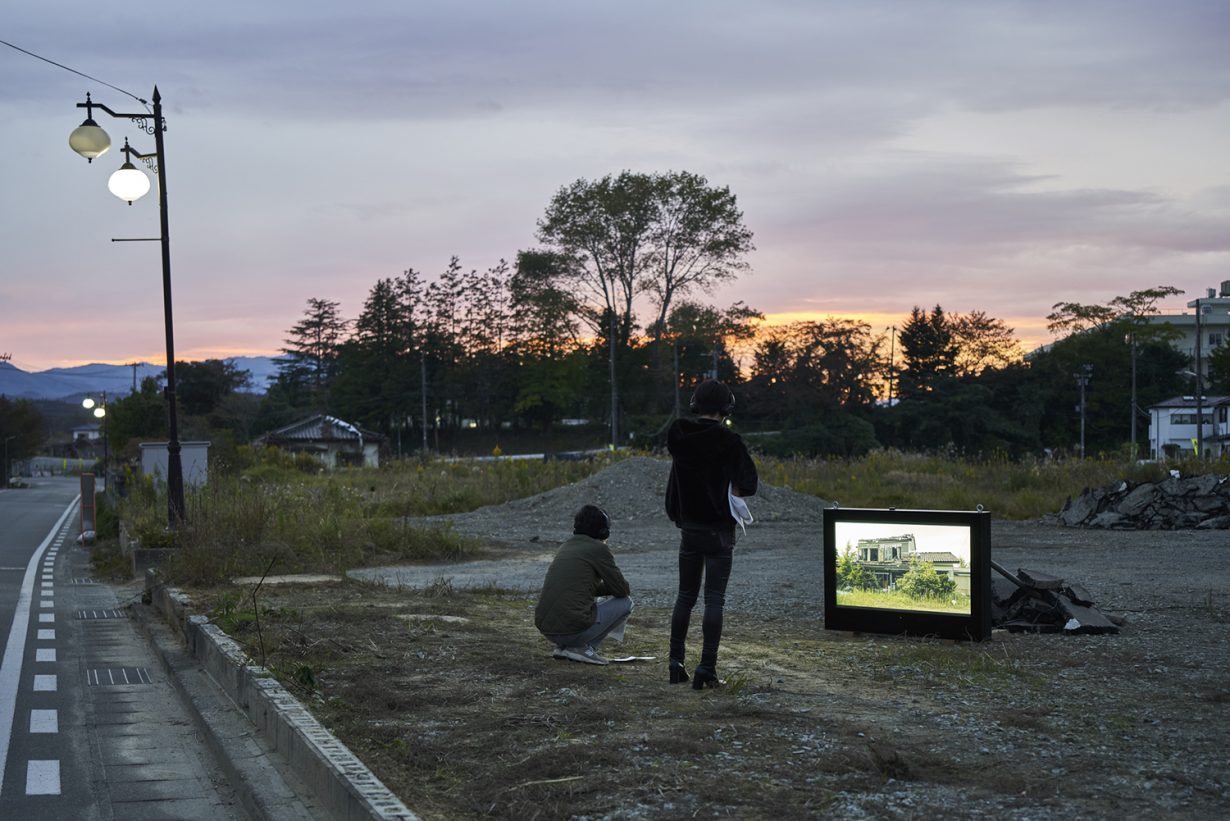
Six years ago, when I first visited the group exhibition Don’t Follow the Wind, I was moved as I listened to this imagined conversation, voyeuristically peering into Mr and Mrs Y’s devastated living room. Mr Y has since demolished his house. The state has subsidised demolitions in an attempt, presumably, to prepare a blank slate for the reopening of the town. Though Koizumi’s site-specific piece is also now gone, the site was opened last month.
In response to the opening of the site and the demolition of his work, Koizumi has reimagined the piece as Home Drama (2022). Now, visitors are given a map and a portable audio player with headphones and invited to take a walk starting at the site of Mr Y’s former home, listening to the same conversation, now looped to hypnotic effect, and ending at an elevated area filled with plots of land from which others’ homes have been removed – the partially remaining foundation walls all that’s left of the dwellings.
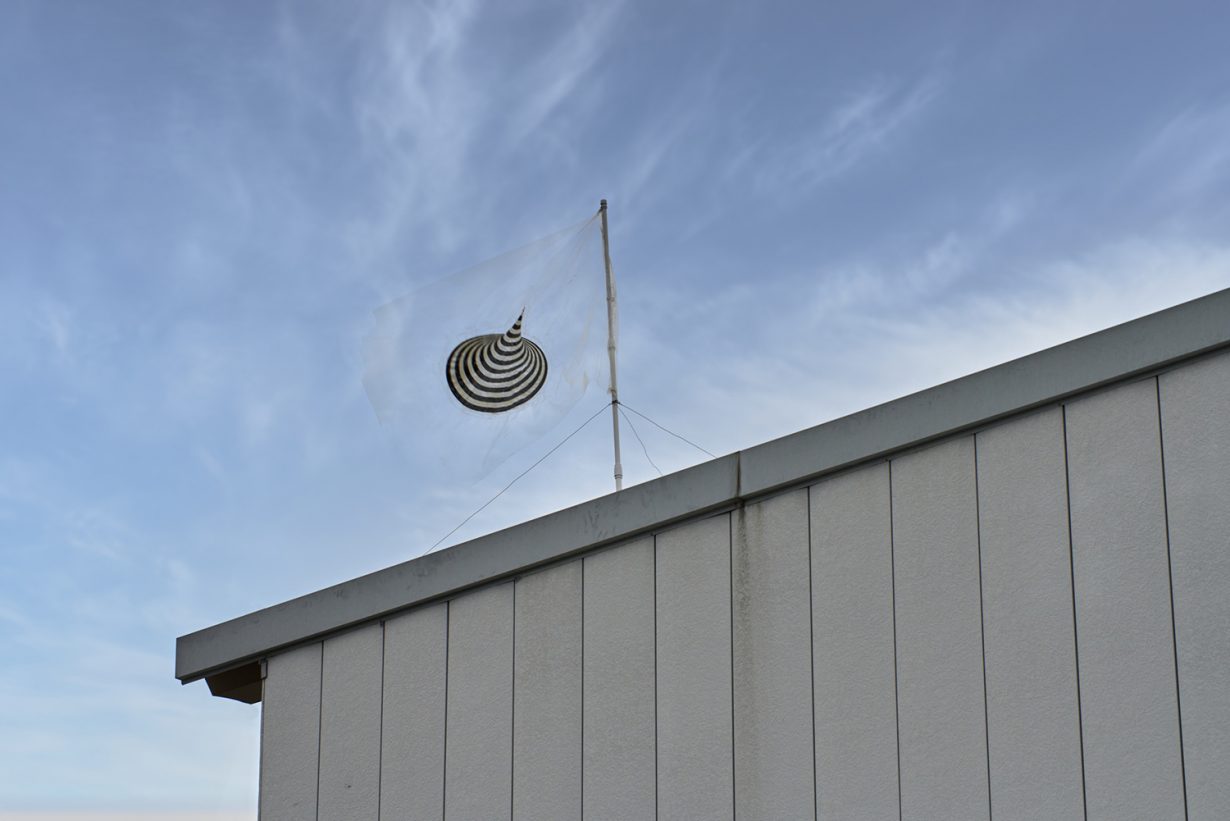
In this new iteration of Home, Koizumi shifts the work’s original focus on the experience of a single person towards the town’s community. The juxtaposition of Mr Y’s narration and the surrounding site turns our attention to broader social and historical dimensions: on the way, visitors may walk past a graveyard, an overgrown playpark and a radiation screening station.
Koizumi, who led our walk, explained that the added ‘Drama’ of the title refers to television dramas. The newly added soundtrack, he said, was a response to the emotional effect he experienced upon seeing the plots of land as the sun set just the day before. He had felt as if he was watching a TV melodrama. Though the instrumentation successfully ramps up emotional effect, the added drama also risks presenting the landscape as picturesque ruin, and ‘life imitates culture industry’ feels somewhat cynical given the circumstances.
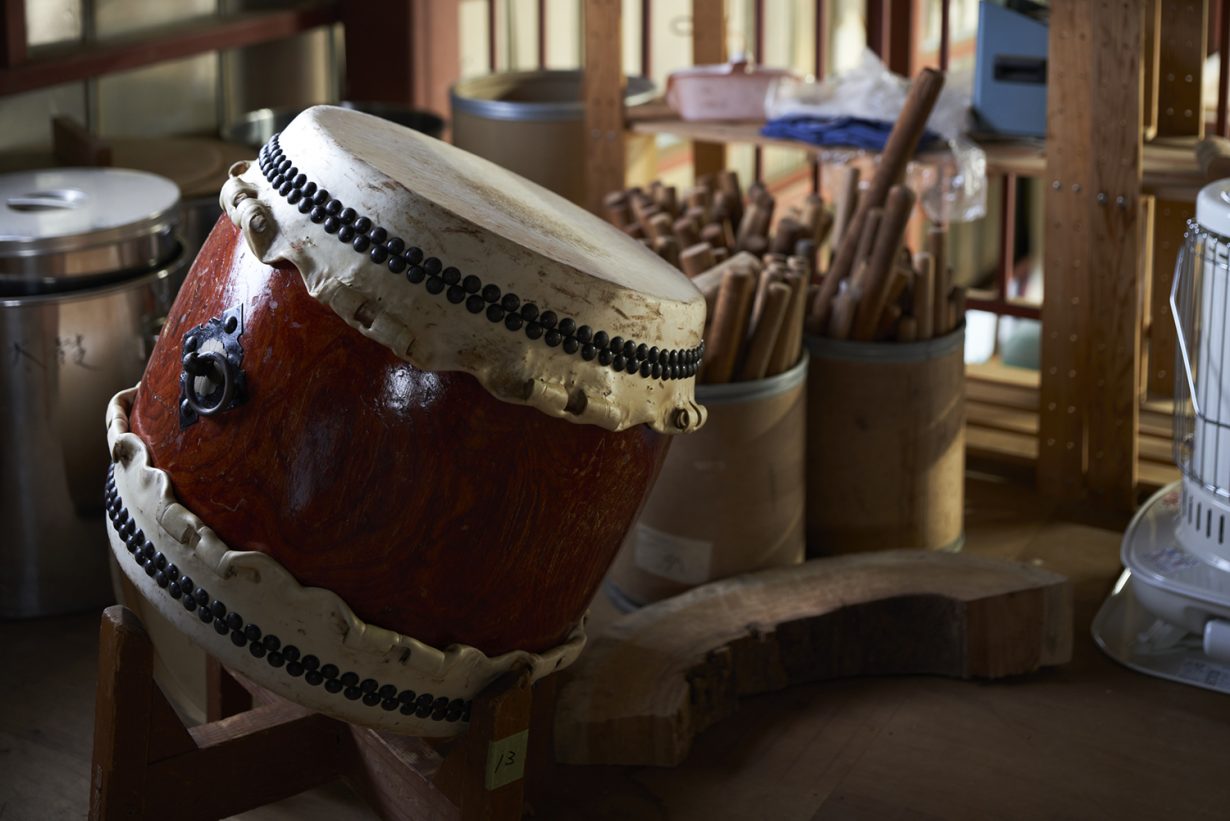
Back at the site, above Mr Y’s taiko drum-making studio, which stands adjacent to the former site of his home, is the Non-Visitor Center. Since 2015, the Don’t Follow the Wind curatorial collective (Chim↑Pom from Smappa!Group, Kenji Kubota, Jason Waite, Eva & Franco Mattes) has presented Non-Visitor Centers in over ten nations, including Japan, as a way to convey the existence of this inaccessible exhibition and ongoing nuclear disaster by disseminating information from the exclusion zone to those living outside it. This time, the curatorial collective has worked with scientists to study the changing ecology of the region. In the absence of humans, animals and plants have thrived, and the works in Don’t Follow the Wind, which receive virtually no human visitors, are routinely visited by Japanese green pheasants and monkeys, rabbits and wild boars, who have been captured by unmanned cameras.
The video footage, much of it shot at night, combined with testimonies from scientists and displaced local residents, recognises nonhumans as actors in the networks of the exhibition as well as the exclusion zone. One scientist describes the momentary rise of a hybrid wild boar-domestic pig populace after the earthquake and tsunami. A resident explains how hearing the return of frogs’ songs rekindled his hope for the area’s recovery. Tales and images of these nonhuman actors bring an unexpected joy by derailing anthropocentric, humanist thinking, to an otherwise devastatingly complex situation. While the state is eager to demonstrate the region’s recovery, displaced residents, who have had to make a life elsewhere for the last 11 years, still have little to come home to.
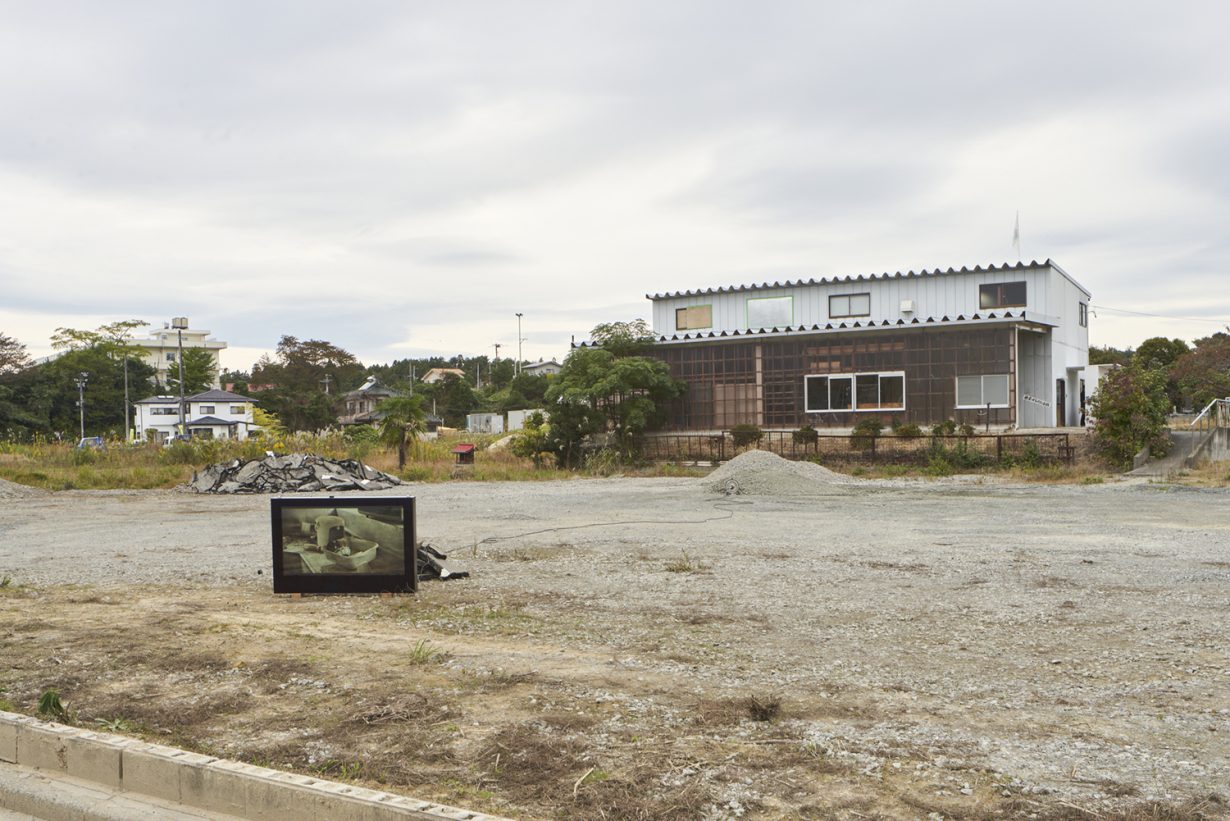
Well over half a century ago, the American artist Robert Smithson addressed the concepts of ‘site’ and ‘non-site’. His Site / Non-Site sculptures, which contained geological samples taken from ‘sites’, were exhibited in the ‘non-site’ of the art gallery. The ‘sites’ registered the workings of time, while the ‘non-site’ of the institutional art space remained relatively ahistorical. Though the terms differ, the ‘site’ of the Non-Visitor Center is the exclusion zone. Evidence and information from the site of the exclusion zone is shown in the ‘non-site’ of the Non-Visitor Center. The ‘non-visitor’ is hence a person barred from visiting the site. For the first time, in the current version of the Non-Visitor Center, a former site has been turned into non-site by the state’s lifting of its evacuation order.
Both Koizumi’s Home Drama and the latest Non-Visitor Center highlight the shifting, even vivacious, nature of the exclusion zone’s landscape, but I fear the latter emphasises the distinction between site and non-site when the boundaries are less clear. After all, ‘non-visitors’ need only walk a short distance from Mr Y’s studio to reach the barricades that form the borders of the exclusion zone.
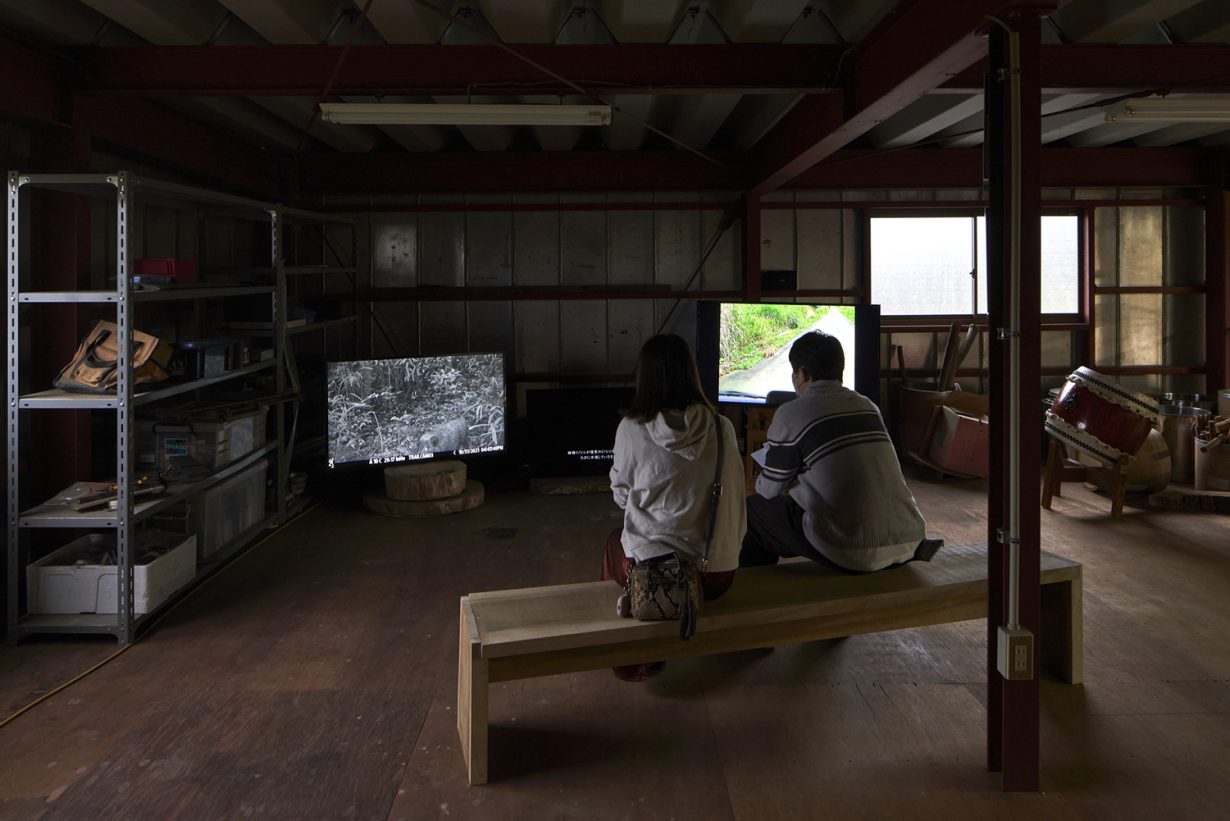
So far, I was told, only one resident has returned to Futaba. Meanwhile, a shiny new building, rendered in Shigeru Ban-inflected state architectural style, where wood is abundantly employed to connote goodwill, has sprung up in front of the giant, unmanned, desolate single platform train station to house the municipal workers who far outnumber residents during daytime office hours. At the Non-Visitor Center, one displaced resident has relativised the current crisis by invoking historical context: “This area was nearly wiped out during the Tenpo famine of the Edo period. It took 100 to 200 years for the population to recover”, he announces. When the rest of Don’t Follow the Wind will open remains unknowable. The exhibit thus implores us similarly to imagine art and site in challengingly long timeframes, but also provocatively suggests that they may be indifferent to our presence.
